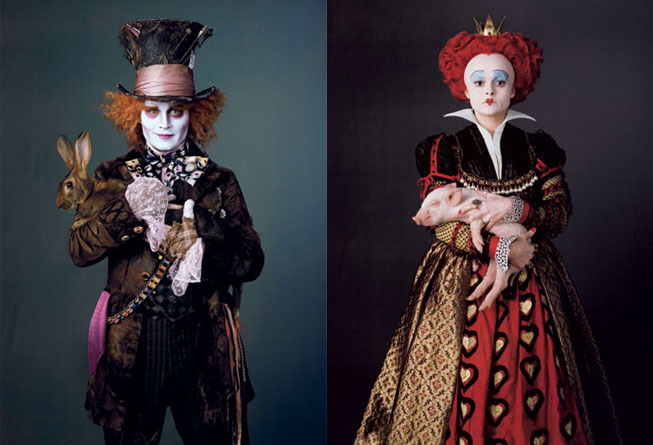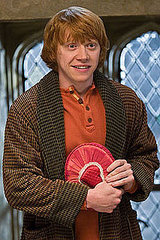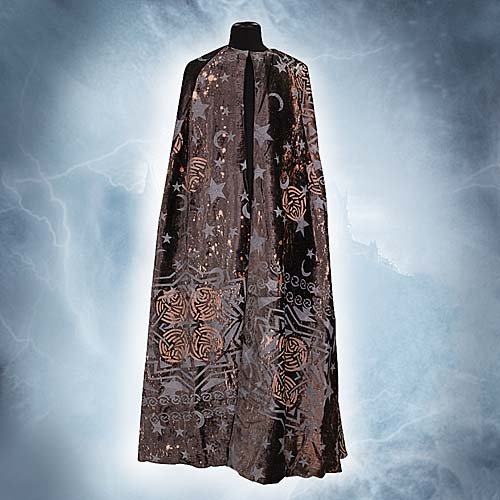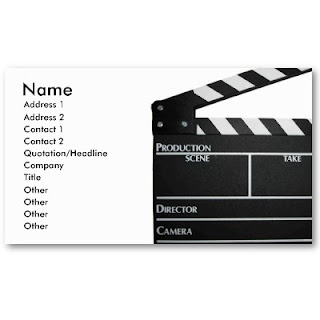"The Plan" directed by Betty Thomas
“Fashion is so close in revealing a person's inner feelings and everybody seems to hate to lay claim to vanity so people tend to push it away. It's really too close to the quick of the soul.” - Stella Blum
Sunday, May 8, 2011
"The Plan" - An upcoming movie
And now comes your way a movie that portrays fashion in films really well!
Iconic Fashion Film Nombre 5
5. Desperately Seeking Susan
The film's costume designer Santo Loquasto designed Madonna's character, Susan's leather pyramid jacket. In reality Madonna was chosen for her sense of style for the movie and her style was reflected in the clothes that she wore throughout the movie.
Iconic Fashion Film Nombre 4
4. Sex and the city
Patricia Field was the costume designer for both the tv shows and movies of sex and the city. When designing costumes for the tv shows, she would choose outfits that were unexpected, fresh and sometimes even outrageous. Therefore, when on the set of sex and the city (the movie) after a few years faced with the same task of designing costumes for the 4 main characters, she wanted to come up with some kind of action, by which she could follow some philosophy about the movie. On this note, she decided to make the outfits in the movie more sophisticated and more to the elegant yet sexy side for an older crowd of women who were more sensible and driven by profession. as she realized Carrie had evolved as a more mature and career oriented woman in the movie but had was still sexy.P
Iconic Fashion Film Nombre 3
3. Funny Face
One of the outfits worn by Audrey Hepburn in Funny Face was the one during her photoshoot in Paris where she wore a short sleeved black dress with fitted waist and full skirt. Flat black pumps and black hat. White wrist length gloves. This outfit, like all the rest was also designed by Hubert de Givenchy along with Edith Head for Audrey Hepburn. He won the Best Costume Design in the Oscars. This was perhaps because the costumes were so well suited to Hepburn's role in the movie which was the shy but intellectual character given to her. Hence, she wore plain clothes and shoes in neutral shades.
Iconic Fashion Film Nombre 2
2. American Gigolo
Giorgio Armani, the famous Italian designer has made a significant intervention into film history. Costumes in the movie American Gigolo (1980) by Richard Gere's character Julian helped to alter the way in which the cinema perceived and represented masculinity. The most sought after scene in the movie shows Julian choosing an outfit to wear for an appointment he had in the evening. On his bed, he laid out a selection of Armani jackets, and then matches them with some shirts. Finally, he adds an array of possible ties before finally picking one to wear. While doing so, Julian shimmies sensuously to music, dressed only in his boxer shorts. Once dressed, he checks himself in the mirror. Julian's overt narcissism, together with his love for Armani's expensive clothes, brought in a radical reacquiration of heterosexual masculinity on screen.
Iconic Fashion Film Nombre 1
1. Breakfast at Tiffany’s
The costumes in "Breakfast at Tiffany's" portrays the image of a New York Socialista who is in a high class society. The show was like a cinematic fashion show for Givenchy as they designed all of Audrey Hepburn's gowns in the movie. Hubert de Givenchy was the first couture high fashion designer to have broken into costume design in films. In the past, Audrey Hepburn was Givenchy's favorite model, and thus was cast in this part literally like a clothes hanger for Givenchy.
The Epitome of a Fantasy Film
Alice in Wonderland
Alice in Wonderland, is a computer-animated/live action fantasy adventure film that draws inspiration from Lewis Carroll’s fantasy novel Alice’s Adventures in Wonderland and its sequel Through the Looking-Glass, and What Alice Found There. Alice returns 13 years after her first visit as a young women to find out that she is the only one who can slay the Jabberwocky, a dragon-like creature controlled by the Red Queen, who terrorizes Underland’s inhibitants.
Alice in Wonderland is directed by Tim Burton and written by Linda Woolverton. Released by Walt Disney Pictures, the film stars Mia Wasikowska, Johnny Depp, Helena Bonham Carter, Anne Hathaway, Crispin Glover, Michael Sheen, Leo Bill and Stephen Fry. At the 83rd Academy Awards, Alice in Wonderland won for Best Art Direction and Best Costume Design. The films costume designer is a two-time Oscar-winner, Colleen Atwood. She has been raved about her gothic Victorian creations in Sweeney Todd: The Demon Barber of Fleet Street. She has also featured a how-to guide to dressing as The Mad Hatter from Alice in Wonderland.
In an interview excerpt, Collin Atwood explains the thought process on the costumes of the main characters in Alice in Wonderland.
Johny Depp: his coat has 2-3 layers of sheer silk over one final piece of silk. The fabric is then burned at several places to give it its sheer age and mood ring. It is to provide the quality for the liveliness of the movie. He wears a joke tie which can be pulled up and or down based on his mood. In scenes where he is happy, the bow tie rises up and when he is sad the tie bows snoops down. His coat also holds a set of scissors and ribbons which get pulled to make a hat at the last minute. His coat also has stitched on it different threads which he uses to embroidery on his pant while waiting for Alice to come. The waist coast is made of tiny pieces of fabric stitched together which do not match. Remanded together and all the buttons are different because he is a little like a mag pie which kicks up things he sees and turns them into other things.
The dress Alice wears right at the beginning of the party, it is embroidered at the helm, pre-empting her run through the fields. As she has to fall into the rabbit hole, layers have been added to her dress so that when she falls upside down, one gets to see the different layers; the blue, the fun stripes, stockings, bloomers and all other things.
Alice’s red dress is made for when Alice turns gigantic. It is made in a couple of different scales to play around with the scale of the curtains on it. The strips are wider to show the effect of the smaller to larger person.
The costume of the Red Queen was experimented a lot with as the size of her head is technically many different sizes in the movie and therefore the best approach to the costume had to be adopted. After much playing around the main thing that was changed was the collar of the dress. It was widened to make the neck stand out and that it did not look as if a head was planted on the collar. The black line in the middle of the dress was made to give a more wasp like figure to the dress. It was made such that the top collected and came to a point just before it went back out again. The colours of the dress follow the colours of the Red Queens Court i.e. red, black and a touch of gold.
A Fiction Movie's Specimen
The Harry Potter Series
Temime said that on every new filming for the next part of Harry Potter, the whole wardrobe has to be changes each time because her saying is that in just the one or two years gap between each move, the characters grow and change so fast that they would look outgrown in the clothes from the previous movie.
In Harry Potter and the Sorcerer's Stone, Harry Potter and the Chamber of Secrets and the Prisoner of Azkaban, since the starring actors Harry Potter (Radcliffe), Hermoine Granger (Watson) and Ron Weasley (Grint) were still quite young, they were dresses in Grey Jumpers or cardigans, Turtlenecks weater with designs on them, or plain grey sweaters or tees under their or with their uniforms and had slightly dishevelled hair which made them look younger. An example would be the grey jumper Radcliffe is wearing below or the grey sweater under the Hogwarts uniform worn by Watson or the Cardigans worn by the three.
For example, for the clothes to look like they suited the Weasley middle class status, Grint was made to wear cardigans that looked like they came from a charity shop but were actually from high street shops and made to look all scruffy and old to fit his middle class status. They did this by dying the the cardigans and hence changing their colour, breaking henceforth customizing the cardigan completely.
Tamime also added that all the clothes were made to work and hence were mostly hand-stitched. To stitch other clothing such as coats, cloaks, etcetera, the colours, movement of the cloth, thickness/thinness, weight of cloth, textures involved were all taken into consideration when making the clothings. In addition, for each costume stitched, 12 copies of the same costumes have to be stitched. This is because of the fear of the costumes getting spoilt and torn/ripped. Furthermore, as the clothes stitched are very sensitive, most of them cannot be washed therefore, there is a need for multiple copies of the same outfit as they may be used on different days of the filming or in different parts of the movie.
To make the clothes look all old, rusty, several things are done applied on the cloth. The cloth could be rubbed with stones, scraped with sandpaper, washed with hands to make them look more lifted and realistic. This is called 'breaking down'. This is all done to suit the film and its scenes.
The costume department does not only have to focus on the main starring actors or the co-starring actors, but also has to arrange and decide for the costumes for all the hundreds of students who are on the sets of Harry Potter during filming most of the time as the other students of Hogwarts. Hundreds of gowns have to be stitched for them to give them the Hogwarts 'look' and to make sure they blend into the scenes.
Measurements too, for each character are different. In accordance to the movie, even the students and teachers and other characters such as voldemort or dumbledore have coats of different lengths, different intricate designs and/or patterns on their coats which represents their status of who they are in the movie.
Take Sirius Black for example. In Harry Potter and the Prisoner of Azkaban, he was dresses in rags- wearing nothing but ripped black cloth. When he returns in Harry Potter and the Order of the Phoenix, he wears clothes of the riches- embroidered vests with a gold watch hung on it which is from his family's heritage. His transformation from rags to riches is shown by the difference in his clothing.
Hence, Temime says that the costumes are done to perfection because she feels that nothing should be left to chance. Her belief is that people see the even the smallest mistakes or details left undone in a movie and hence she aims to make sure that the costumes of the characters blend in perfectly into that specific scene.
The explicit detail Temime adds to costumes to make them perfect and the effort her and her team make shows what a driven and fantastic costume designer she is. She is the setter of tone in the Harry Potter movies.
Wednesday, April 27, 2011
(All about the costume designers)
Famous iconic Costume Designers and the roles they play in Fashion and Films-
The Costume designer is the person who designs costumes for a film or stage production. He or she forms an important part of the "production team," alongside the director, scenic and lighting designers. Costume design is the design of the appearance of the characters in a theater or cinema performance which potrays the real character of the actor. This usually involves designing or choosing clothing for the actors to wear, but it may also include designing masks, makeup or other unusual forms.
Costume designers try to enhance a character's personality to potray the various social and cultural context through the way that character is dressed, while at the same time giving space to the actor to move and perform actions and show emotions as required by the script. The designer needs to possess a keen eye , strong artistic capabilities and a thorough knowledge of fashion history.
Famous Costume Designers in Films-
Cecil Beaton - My Fair Lady, Gigi
Jenny Beavan - Howards End, Sense and Sensibility
John Bright - Howards End, Sense and Sensibility
Milena Canonero - Out of Africa, Titus Ngila Dickson - The Lord of the Rings: The Return of the King, The Last Samurai
Danilo Donati - Romeo and Juliet
Edith Head - Sabrina (1954), The Sting
Jenny Beavan - Howards End, Sense and Sensibility
John Bright - Howards End, Sense and Sensibility
Milena Canonero - Out of Africa, Titus Ngila Dickson - The Lord of the Rings: The Return of the King, The Last Samurai
Danilo Donati - Romeo and Juliet
Edith Head - Sabrina (1954), The Sting
Dorothy Jeakins - The Sound of Music
Jean Louis - From Here to Eternity
Orry-Kelly - Gypsy
Jean Louis - From Here to Eternity
Orry-Kelly - Gypsy
Cecil Beaton - My Fair Lady, Gigi
Walter Plunkett - Gone with the Wind, Singin' in the Rain
Sandy Powell - The Wings of the Dove, Shakespeare in Love
Ann Roth - The English Patient
Irene Sharaff - Call Me Madam, Guys and Dolls
Theodora van Runkle - Bonnie and Clyde
Sandy Powell - The Wings of the Dove, Shakespeare in Love
Ann Roth - The English Patient
Irene Sharaff - Call Me Madam, Guys and Dolls
Theodora van Runkle - Bonnie and Clyde
Costume Designers With Profound Effect on Film
Adrian (costume designer)- The Wizard of Oz
Adrian, was an American costume designer who became famous for his costumes for The Wizard of Oz and other Metro-Goldwyn-Mayer films of the 1930s and 1940s. During his entire career, he designed costumes for over 250 films and his screen credits usually read as "Gowns by Adrian". Adrian was hired by Rudolph Valentino's wife Natacha Rambova to design costumes for A Sainted Devil in 1924. He also designed for Rambova's film, What Price Beauty? (1925). Adrian became head costume designer for Cecil B. DeMille's independent film studio. Adrian was hired as chief costume designer at the studio. Adrian worked at MGM. In that studio during his career , Adrian designed costumes for over 200 films.
Edith Head(Costume Designer)-The Sting
Edith Head was a known and legendary Hollywood costume designer .She dressed the silent film stars of the 1920s, designed the dress of the Hitchcock blondes, She made Audrey Hepburn into a princess and put Princess Grace into the frame of GOLDEN GIRL: Edith Head won eight Oscars during her career of over 50 years as a costume designer.She was the costume designer for various well known films that include The Heiress (1949), Samson and Delilah (1950), All About Eve (1950), A Place in theSun (1951), Roman Holiday (1953), Sabrina (1954), The Facts of Life (1960) and The Sting (1973).In fashion, Head was truly competitive . Her career is emnamoured with well known achievements. "Accentuate the positive and camouflage the rest," was the spirit behind famous Edithism.
Patricia Field(Costume Designer)-Sex and the city
Patricia Field, is an American costume designer, stylist and fashion designer. Field's was a well known costume designer for Sex and the City, the show became famous for the fashions it showcased. Field was nominated for 5 Emmy Awards for her work on sex and city. She was nominated for 6 Costume Designers Guild Awards. She is one out of six Honorees of the 2008 Reel Time Film Festival. She went on to return as Costume Designer for the movie "Sex and the City’ (2008) and the sequel "Sex and the City 2" (2010). Field has worked in the Asian market also by creating the fashion. She has served as a costume designer for the feature film The Devil Wears Prada, for which she was nominated for an Oscar for Best Costume Design.
Mise-en-Scene
Mise-en-scène; a French term that originates from theater. It means to "put in the scene", literally.
It has a broader meaning for film and refers to almost everything that goes into the composed shot, including the composition, framing, movement of the camera and characters, lighting, set design and general visual environment, even sound because it helps explain the composition. The composition can be defined as the articulation of the cinematic space, and is precisely about space. Cutting is about time; the shot is about what occurs in a defined area of space, surrounded by the frame of the movie screen and derived by what the camera has been made to record. The mise-en-scène can be unique, closed off by the frame, or open, providing the illusion of more space around it.
Mise-en-scène is also used when the director wishes to give an impression of the characters or situation without having to say it out verbally through the framework of spoken dialogue, and typically does not represent a realistic setting.
It has a broader meaning for film and refers to almost everything that goes into the composed shot, including the composition, framing, movement of the camera and characters, lighting, set design and general visual environment, even sound because it helps explain the composition. The composition can be defined as the articulation of the cinematic space, and is precisely about space. Cutting is about time; the shot is about what occurs in a defined area of space, surrounded by the frame of the movie screen and derived by what the camera has been made to record. The mise-en-scène can be unique, closed off by the frame, or open, providing the illusion of more space around it.
Mise-en-scène is also used when the director wishes to give an impression of the characters or situation without having to say it out verbally through the framework of spoken dialogue, and typically does not represent a realistic setting.
Key aspects of mise en scène
- Set design
- An important element of "putting in the scene" is set design—the setting of a scene and the objects (props) there in. Set design can be used to amplify character emotion or the dominant mood of a film, or to establish aspects of the character.
- Lighting
- The intensity, direction, and quality of lighting have an amazing effect on the way an image is perceived. Light and shade can emphasize on the texture, the shape, thebdistance, mood, the time of day or night, the season, the glamor; it affects the way colors are renderedband can focus attention on particular elements of the composition.
- Space
- The representation of space affects the reading of a film. Depth, proximity, size and proportions of the places and objects in a film can be manipulated through camera placement and lenses, lighting, set design, effectively determining mood or relationships between elements in the story world.
- Costume
- Costume simply refers to the clothes that characters wear. Using certain colors or designs, costumes in narrative cinema are used to signify characters or to make clear distinctions between characters.
- Acting
- There is large amounts os historical and cultural variation in performance styles in the cinema. Early melodramatic styles, clearly indebted to the 19th century theater, gave way in Western cinema to a relatively naturalistic style.
Communication of fashion- through film
a. Signifier and signified
b. Denotation and Connotation
c. The three roles involved in communicating through dress
d. The three rules on how to understand the meaning of dress
e. The three contexts involved in better understanding the meaning of dress
Fashion on the silver screen is used as a descriptive counterpart to the narrative counterpart of the film script to communicate and establish the emotional concerns of the actors/scene in a film to the audience.
Films are also a mode of communication; they communicate a story, an idea, and a concept. Films use visual cues such as props, costumes, facial expressions, movements as well as sound cues such as the dialogues. we use costumes/fashion as a visual cue in reality.
Tuesday, April 26, 2011
F. I . L . M ; & what it is to fashion
A FILM, also called a movie or motion picture, is a series of still or moving images that are produced by the recording of images using a camera or by creating images using animation techniques or visual effects. Filmmaking has become an art form and industry. Films help to also reflect cultures, people and their personalities. Film is considered to be an important form of art, a source of popular entertainment and a powerful method for educating people. The visual elements of cinema give motion pictures a universal power of communication. Some films have become popular worldwide attractions by using subtitles that traslate the dialogue into the language of the viewer so that people of other nationalities who speak and converse in a different language, can still watch a movie that is in a different language. This diversifies people, exposing thing to cultures and facts they had never seen or heard of before.
How is fashion then related to film?
Films are primarily visual mediums; they communicate to their audience via their sense of sight. Films are made up of visual cues such as colors, movements, facial expressions, costumes, props, etc.
Fashion has always been an intricate part of films. Without fashion, films would be incomplete. Films encompass dialogues, movements, sounds and fashion. The costumes in a film are a crucial aspect to understanding the emotional concerns of the characters in the film.
Subscribe to:
Posts (Atom)
































